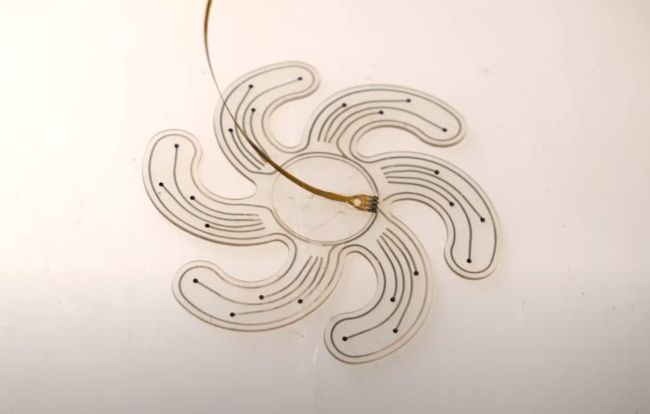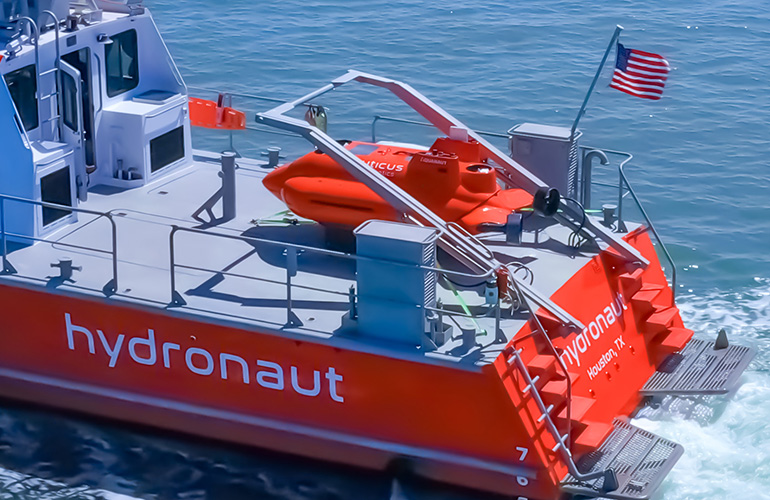Implanting arrays of stimulating electrodes on the brain's surface is sometimes used to treat epilepsy and neurological conditions. A new soft robotic system enables far less invasive electrode placement than ever before.
The problem with implanting a whole interconnected set of electrodes is that it requires removing and replacing a relatively large section of the skull. It would be far better if only a small hole was needed.
To address this, scientists at Switzerland's EPFL developed an "inflatable" electrode array of soft, biocompatible elastomer with six spiraling sleeves. The underside of each sleeve houses many electrodes.
Initially collapsed inside a cylindrical tube, the device's end is inserted into the space between brain and skull through a 2cm skull hole. Harmless fluid then inflates each sleeve sequentially, gently securing the array inside the skull.
When complete, the flower-shaped array covers a 4cm area of brain cortex even though it passed through an opening half that size. And since the sleeves rotate during inflation, electrodes fully contact brain tissue.
Already successfully tested in pigs, the technology is being commercialized by Neurosoft Bioelectronics, an EPFL spin-off. As the device evolves, the required hole size is expected to shrink further while electrode arrays scale up.
The soft robotics technique promises major benefits for brain-machine interfaces. Small, inflatable electrodes cause minimal trauma while enabling stable, extensive brain coverage.
By radically improving implantable electrode integration, the technology could accelerate therapies and next-gen prosthetics that depend on precise, long-term brain signal recording. It demonstrates soft robotics' huge medical potential.


















